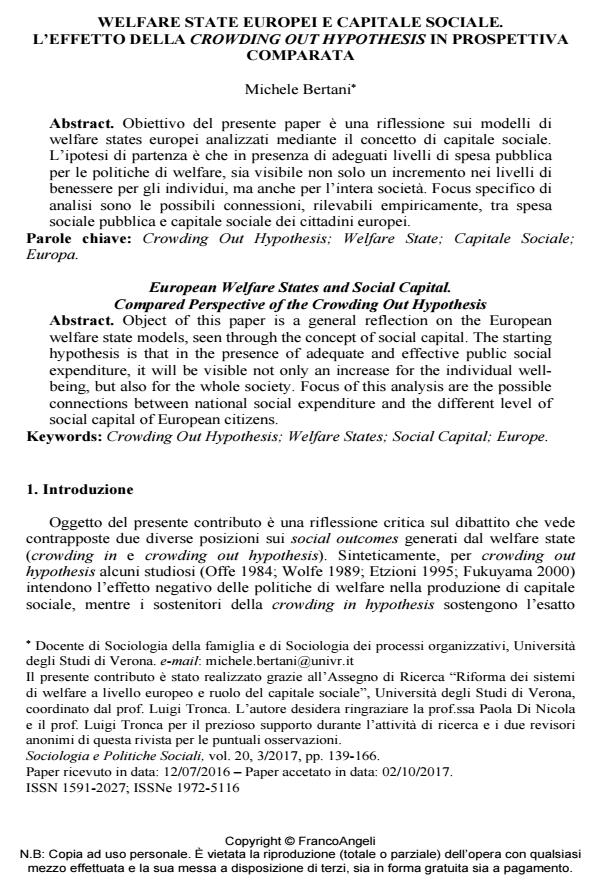European Welfare States and Social Capital
Journal title SOCIOLOGIA E POLITICHE SOCIALI
Author/s Michele Bertani
Publishing Year 2018 Issue 2017/3
Language Italian Pages 28 P. 139-166 File size 343 KB
DOI 10.3280/SP2017-003008
DOI is like a bar code for intellectual property: to have more infomation
click here
Below, you can see the article first page
If you want to buy this article in PDF format, you can do it, following the instructions to buy download credits

FrancoAngeli is member of Publishers International Linking Association, Inc (PILA), a not-for-profit association which run the CrossRef service enabling links to and from online scholarly content.
Compared Perspective of the Crowding Out Hypothesis Abstract. Object of this paper is a general reflection on the European welfare state models, seen through the concept of social capital. The starting hypothesis is that in the presence of adequate and effective public social expenditure, it will be visible not only an increase for the individual wellbeing, but also for the whole society. Focus of this analysis are the possible connections between national social expenditure and the different level of social capital of European citizens.
Keywords: Crowding Out Hypothesis; Welfare States; Social Capital; Europe
Michele Bertani, Welfare state europei e capitale sociale. L’effetto della Crowding out Hypothesis in prospettiva comparata in "SOCIOLOGIA E POLITICHE SOCIALI" 3/2017, pp 139-166, DOI: 10.3280/SP2017-003008